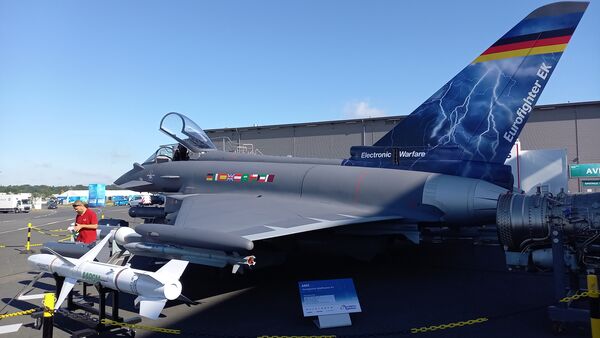
The EU is looking to boost the airborne electronic attack capabilities of its member states via the REACT II programme. As a participant in the programme, Germany is already developing its own Eurofighter EK aircraft for the mission. (Janes/Gareth Jennings)
The European Union (EU) is looking to enhance its airborne electronic attack (AEA) capabilities via the Responsive Electronic Attack for Cooperation Tasks II (REACT II) programme announced on 26 June.
Led by Spain's Indra Sistemas, REACT II is to be a 48-month research and development effort valued at EUR69.7 million (USD76.3 million), of which the EU is to contribute EUR40 million.
“REACT II will boost effort of the EU defence sector to fill in the existing gaps in EU Airborne Electronic Attack (AEA) capabilities,” the European Defence Fund (EDF) announced in its factsheet for the project, which is being funded under the European Defence Industrial Development Programme (EDIDP) 2022.
As noted in the factsheet, REACT II builds on the lessons learned from REACT I (also known as REACT), which was disclosed in March and was funded under the EDIDP 2019. “The REACT II system solution will be capable of performing escort jamming, stand-off jamming, stand-in jamming, electronic warfare (EW) command and control, and cyber and electromagnetic (EM) activities, ultimately improving reliability and security for operations,” the EDF said.
With Spain leading the programme, REACT II also includes Bulgaria, Estonia, France, Germany, Italy, Lithuania, the Netherlands, Poland, and Sweden (REACT I comprised Germany, Italy, Spain, and Sweden). Both REACT I and REACT II are related to the Permanent Structured Cooperation (PESCO) AEA programme, which involves France, Germany, Italy, Spain, and Sweden.
Looking to read the full article?
Gain unlimited access to Janes news and more...







